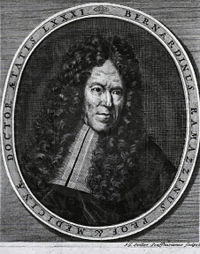
 Last weekend I visited the University of Michigan Museum of Art as a way to escape work, classes, and the dreary weather for a few hours. I mostly visited out of curiosity (to be honest, I wasn't expecting too much from a university art museum), but I was surprised by the diversity of their collection - it's got everything from copies of Greco-Roman statues to Buddhist sculpture, with American landscape paintings and German Expressionist prints thrown in for good measure. While the main exhibits were impressive, my favorite gallery was an exhibition on Chang Ku-nien, an artist who trained in classic Chinese landscape painting in the 20th century. Following the cultural revolution, he fled to Taiwan and he was the first to paint Taiwanese landscapes in the traditional Chinese style. In his later years, he traveled extensively throughout the United States and eventually settled in Michigan, where he began to paint the landscapes of the Upper Peninsula in the traditional Chinese style (see the image below). You can find a link to the exhibition with more examples of his work here. It's not related to public health (well, I could probably find a connection if I really tried...), but the university's art museum represents one of the University of Michigan's great advantages - it's size. The sheer size of the university has two primary consequences: it can have excellent programs in many fields, and it draws world-class speakers (Kenneth Cole and Paul Krugman spoke at UMich last term). For students, the benefits are pretty obvious (free access to the vast majority of these events) and the diversity of the faculty mean that it's never difficult for a student to find an expert. The faculty, at least the ones with whom I've had contact, are willing to help even if you're not from their department. As an example, I'll need to get training from medical school faculty in order to carry out my internship this summer, and to get that training all I have to is walk down the street.
1 Comment
In 1700, the Italian physician Bernadino Ramazinni published the first book about occupational epidemiology. His method was simple: based on trends observed in his clinical practice, he studied his patients' worksites and found that certain diseases were correlated with specific exposures, including heavy metals and dust with cancer in miners and industrial workers, and bad posture with pain in weavers. He even looked into how the dangers of an "overtaxed mind" could cause disease in learned men. However, his most enduring legacy is the observation that nuns had more breast cancer and less cervical cancer when compared to the general population of females living in Padua (his hometown). It was a puzzling observation, and one that he did not expect (at the time, one theory about breast cancer was that it resulted from "vigorous sexual concourse"). His explanation followed a similar line of reasoning - the breast is a sexual organ, and without regular sexual activity it would decay. Cancer was the result. Interestingly, he did not apply this same logic to the low incidence of cervical cancer in nuns, but he did propose that it was somehow related to the celibate lifestyle. As it turns out, Ramazzini was right - even if for the wrong reasons. Breast cancer is related to celibacy, but not in the way that you might think. When women become pregnant, their bodies undergo dramatic changes in hormone output, and levels of estrogen decrease markedly. Estrogen has been implicated in the development of breast cancer, and it's thought that the decline in levels brought on by pregnancy has a protective effect. Indeed, women who first become pregnant before the age of 30 have a lower risk of breast cancer than women who first become pregnant after the age of 35.
With cervical cancer, the link is even more dramatic - almost all cases of cervical cancer (>99%) are caused by human papillomavirus (HPV), a sexually transmitted disease. Since the nuns were celibate, they never acquired the virus and therefore never developed cervical cancer. Taken together, these two observations were the first inkling that modern science into lifestyle factors as a possible cause of cancer. We still use this thinking today - smoking is a lifestyle factor, and its role in the development of lung cancer is widely accepted as fact. So although Ramazzini was right for the wrong reasons, his investigation of breast cancer in nuns is one of the great early epidemiologic studies and demonstrates how epidemiology can help us to understand ways to prevent disease and puzzle out risk factors even without a firm grasp of the biologic cause. It's hard to believe that I've completed 25% of my MPH here at the University of Michigan - time has flown by since I started the program. As short as the semester was, our winter break was much shorter (they give us all of two and a half weeks off) and now it's back to work. Seeing as it's the start of a new year and all, now is a good a time as any to look back on last semester, see what I've learned so far, and look ahead to where I hope to be at the end of this semester. To be honest, I wasn't quite sure what to expect when I started last semester (it's not as much like The Hot Zone as I'd hoped...). All in all, it was much more math-based than I thought - I was expecting more of a focus on science and biology. I'll be continuing that trend this term, as most of my courses are either statistics, study design (scientific thinking combined with applied statistics), or using math to model infectious diseases (which is much more fun than it sounds, I promise). So what did I accomplish last semester? There's a picture of the workload below (it's about a foot high). While it looks like a lot, I enjoyed (almost) every minute of it. The assignments were practical and interesting, and the vast majority of the readings were enjoyable. I'm very pleased with the program so far and looking forward to another semester.
|



 RSS Feed
RSS Feed